Echu-Daimon Kite Festival
As we traveled around Japan to various kite festivals it seemed like every third person was from Daimon kite club in Toyama Prefecture. Echu is the old name of Daimon. With this harbinger of things to come, we headed off to the train station in Osaka where we met the other members of the Osaka Kite clu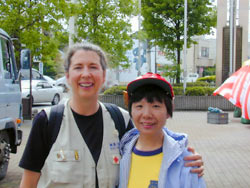 b. b.
We traveled by rail to Takaoka, the next stop after Kanazawa. We were met at the train station by members of the education department of Daimon with a bus and driven to the multipurpose center in Daimon. As we approached the town we came to a bridge on the river, where we saw kites flying, kite symbols in the iron work on the bridge, and banners lining the street announcing the kite festival. Already we were feeling and seeing the energy of kites everywhere in the city.
|
|
|
|
|
|
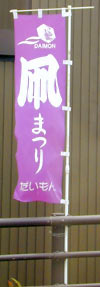 |
|
|
We heard Daimon was a special place with much of the traditional Japanese culture intact. We did notice a lot of people at Uchinada and Nara who were from Daimon, and even met some in China last year. They all seemed enthusiastic about our coming, and gave us kites as presents because we were coming. None of this really prepared us for what we found in Daimon.
|
|
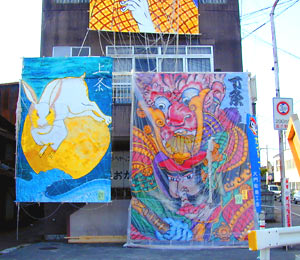 |
|
|
|
We saw kite images on the buildings, with large kites mounted above the movie theater. We entered the multipurpose center, and kite images were on the rugs, doors, and signs. We were rushed upstairs where kite making was already in session with a group of 60 children. Mr. Modegi of the JKA was present, with three guests from England. The class was led by Barry Polter (aka Bazzur). After completing the sled kites with the children, we were bused to the river and flew kites with them. The weather was perfect.
|
|
|
|
|
|
|
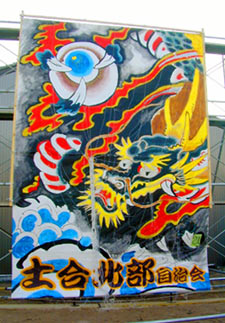 |
|
|
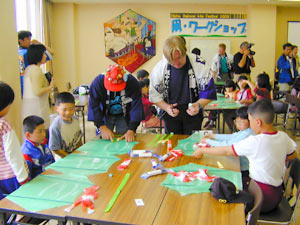 |
|
| Shortly after we came back to the center and walked to the ryokan where we were guests. After a brief rest, we dressed and headed back to the center for the evenings festivities. We left the ryokan early enough to do some photo taking and site seeing. We photographed manhole covers with kites on them, and 15-20 large edo and rokkaku kites along the way. The kites were made of tyvek and bamboo and painted. Some were traditional Japanese mythological images, some were pop images, and some were creative images. |
|
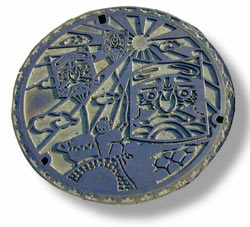 |
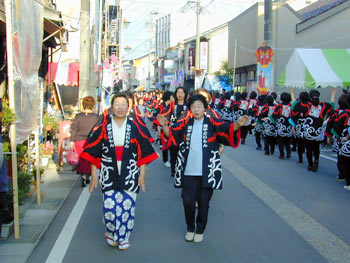 |
|
|
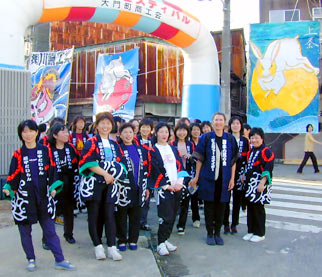 |
|
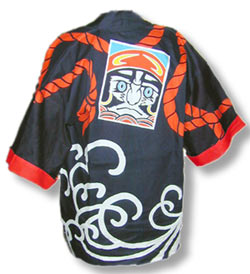 |
|
|
We heard music playing and headed toward it. We were surprised to find a huge line dance being performed down a long block by the women of the town dressed in the happi coats of the town. The dance was a historic one, with the traditional town song playing in the background. Jennifer was asked to join in, and off she went dancing. No one told us of this event so we were completely surprised. But mostly after seeing hundreds of kites and the entire town doing a traditional line dance, we were impressed by the spirit with which this small town in Toyama supports its kite festival. Gathering energy through dance before the kite festival is a common practice all over Japan.
|
|
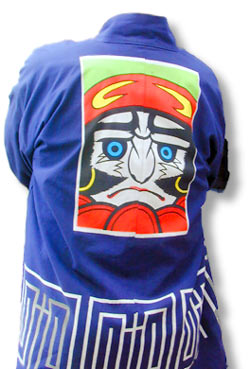 |
|
|
|
|
|
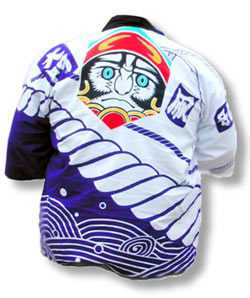 |
|
| Happi coats with the Daimon town icon |
|
|
|
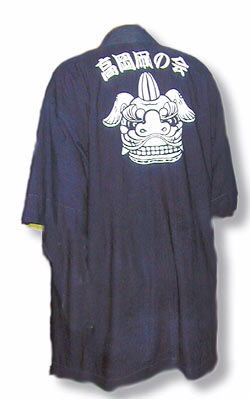 |
|
|
|
The dinner party was outside under tents with speeches by the Mayor and town leaders, and kite club leaders. Dinner was a sushi spread with local specialties. After dinner, there was a kite auction, and then other smaller parties.
The next morning we awoke with a violent thunderstorm, and a downpour, which we thought would cancel the festival. By the time we had breakfast and were loaded onto the bus to go to the festival, it had stopped raining and was merely overcast. There was a light to moderate breeze and by 10 am when the ceremonies began, it was clear and a bit muddy, but fine for flying. At 10:30 the guests began flying for about an hour, with some children and a few larger local kites. By noon the wind had increased a bit, and the locals dragged out their large tyvek kites and the competition began. There were edo style and rokkaku battle events. Teams were from the local businesses, the fire department, even a team of children. No one was upset if a kite crashed down. If it could be repaired and flown again it was; if it couldn’t, well it was only tyvek and bamboo anwyay. |
|
By the end of the day dozens of kites were up at one time flying, tangling, crashing. Teams were on the field while each tent had families picnicing all down the field. It seemed like there was a kite reel at each tent, and on the field each tent had a kite on the field. It seemed like there were as many older people attending as children. A great family day for all.
|
|
|
|
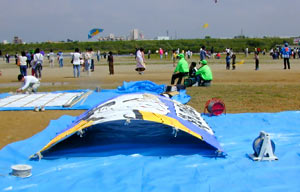 |
|
|
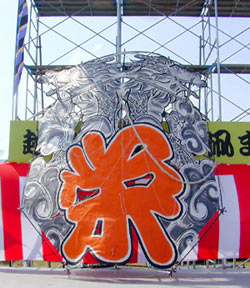 |
|
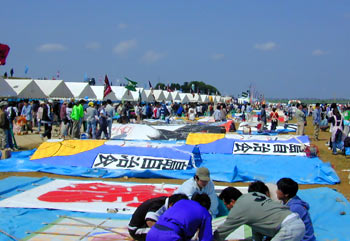 |
|
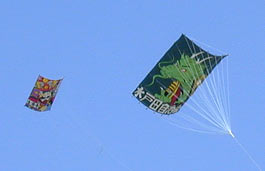 |
|
|
|
|
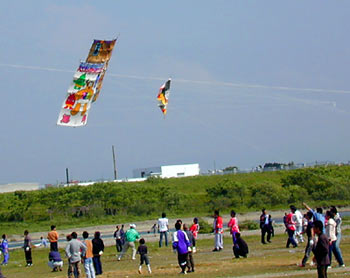 |
|
|
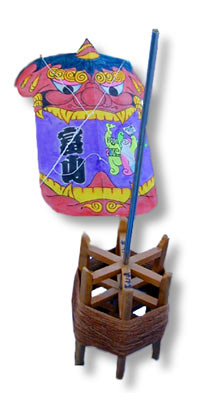 |
|
|
 |
|
|
|
|
|
|
|
|
|
|
|
|
|
|
|
|
|
|
|
|
|
|
|
|
 b.
b.















